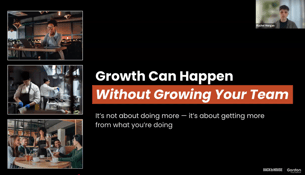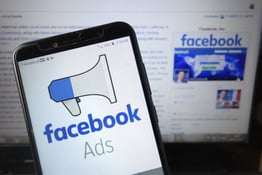Just when you’d gotten the hang of your perfectly styled Instagram shots and timely tweets, social media has dumped even more on your plate. You already know the video platform TikTok has become the latest digital obsession. But let’s assume that at work you don’t have the time to organize a synchronized dance or reply to bizarre survey questions just to be able to engage in some social media marketing for your establishment. Is there still an easy way to use TikTok for restaurants?
If anything, the food and beverage world is an excellent position to take the fledgling social media app by storm — or simply use it as a reliable tool to grow your customer base. Here are six TikTok tips on how to get started, how to stand out, and how to leverage restaurant TikTok to help your restaurant marketing.
As for your on-camera presence, don’t overthink it! An old adage of radio says to imagine your audience is just one person, and to talk directly to that person. Ready? Deep breath? Let's have some fun.
Give a TikTok tour of your restaurant and introduce your staff
People reliably dole out likes to perfectly plated food. But the quick pace of TikTok’s short videos opens up plenty of other creative possibilities. After all, there’s a lot more to making a great restaurant than just slinging Instagrammable food and drinks.
One easy idea: Bring your customers on tours of your business. Introduce an employee, greet a fresh-arriving shipment of food, or show the behind-the-scenes preparation for a special event or party. Videos can help humanize what you’re doing, make you more approachable, and help get a conversation going that can bring in new customers who may not have known you existed before. Here’s an example of what that can look like.
Debut new items or specials on TikTok
Announcing the day’s specials is a surprisingly tired area of creativity in the industry. Scrawlings on an A-frame chalkboard? Yawn. A rushed description from a busy server while they fill water glasses before they have to check on another table? Please. A splashy video with exciting music, delicious visuals, and some personality? Now we’re talking!
TikTok is a fantastic advertising tool for specials or menu additions. Besides being an interactive way to really show off what you’re serving, it can also act as a way to draw in diners who may not have made dinner plans yet. Another weird bonus? Getting comfortable using TikTok to promote food can also actually help you think of new and exciting dishes that will look as good on camera as they taste. This is a great way to let the food speak for itself.
Tap into your customers' finest moments
Great food and solid service may be what keeps a business running, but customers add their own dimension that becomes part of your restaurant’s personality. Chances are, if you’ve felt the pull to be on TikTok, you’ve got at least a couple of customers who can brighten up any timeline.
Take advantage of a genuinely happy moment — a proposal, a birthday party, or just happy friends enjoying each other’s company — and share it with your fans. Record a quick conversation over a meal or cocktail with your favorite repeat customer. You may even end up with seriously ambitious customers who will help you recreate a TikTok dance. You’ll show that you care about the people coming to eat with you. You might even capture something, dare we say, beautiful?
Show off what makes your kitchen or your process unique
TikTok didn’t invent the “how it’s made” video, but it has made them crazy-popular. As a restaurant, you’re in a perfect position to use the platform to give a behind-the-scenes look at what goes into making your best dishes.
You can go big and flashy with blow-torched ingredients. Or keep it mesmerizing with an ASMR-like look at how you construct your perfect pastries. Do you use a weird machine that no one has in their home kitchens? Fire it up and show it off! The platform’s quick cuts can make it easy to keep viewers watching and highlight the flourishes that lend your kitchen a bit of fascination. If your food has a strange backstory, let your customers get excited to see it for themselves.
Tap into TikTok influencers or themed accounts
One of the most tantalizing elements of TikTok is just how many overnight sensations it has created. People in your area may be able to give your business a huge boost with a post about just how great your food is. As constant creators, micro-influencers and verified superstars alike are looking for non-stop content and may be willing to work with you in exchange for some behind-the-scenes access and a few plates of food.
If you’re having trouble finding people in your area willing to come by, don’t sweat it: You can reach out to themed accounts anywhere and invite them to do a cross-promoted post about your business, not dissimilar to an Instagram takeover. Do a little research and see if a cocktail-focused account would be open to reposting a video of one of your signature drinks, or see if a “first date idea” account would be willing to give your restaurant a nod. You just might end up with a video that gets millions of views.
Teach your TikTok audience a recipe or technique
TikTok may have started as a lip-syncing app, but it didn’t take users long to realize that the food world was a perfect fit. Remember “TikTok pasta?” The recipe was an overnight viral sensation that went beyond the app’s influence to become one of the biggest social media hits of the past year.
People love learning. They love food. And you know more about food than they do. So figure out how to teach your customers a thing or two. When it comes to easy, rinse-and-repeat TikTok ideas for restaurants, it doesn’t get much better than recipes and tutorials. It could be specific pointers on how you cook your fish, or the right way to eyeball a classic Manhattan. Show off something customers can come experience for themselves, like a tableside preparation. It could be just the thing they need to see to get excited and pass your post around to friends so they can plan a visit.





